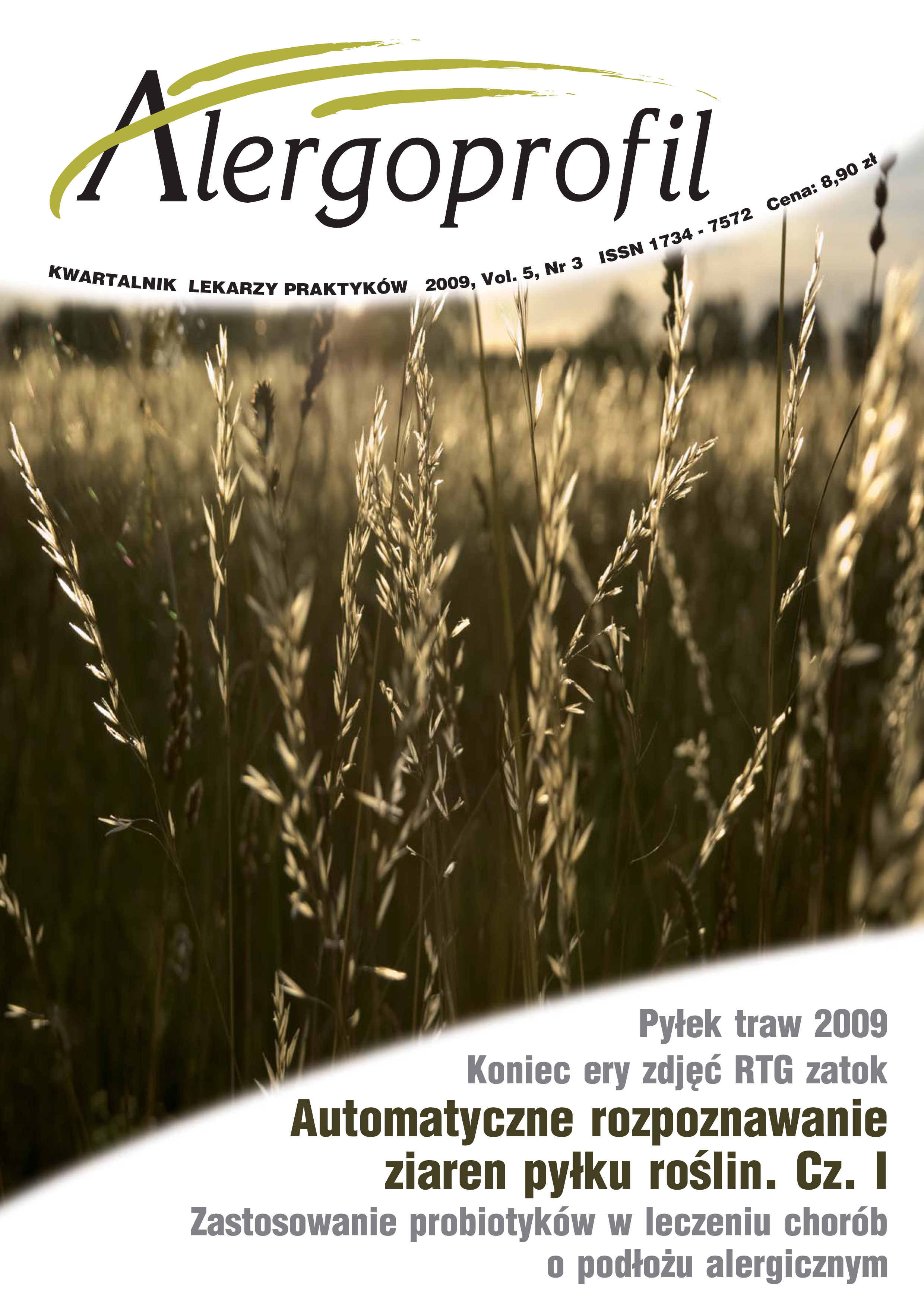Usage of endovascular artery embolization methods in patients with intractable epistaxis – personal experience
Main Article Content
Abstract
It is estimated that at least 60% or even more of population have suffered from epistaxis at least once. Epistaxis may be caused by local or systemic reasons. Usage of endovascular embolization method can be alternative for surgical procedure in treatment of massive threatening life epistaxises. The symptoms of epistaxis in arteriography include: extravasation of contractual blood, false aneurysm, irregular course or interruption in vessel continuity. In embolization of bleeding vessel procedures a histoacryl glue and lipiodol, molecules of vinyl polymers (PVA polymers) or embolization coils are mostly used. Perioperative effectiveness is about 93–100%.
Downloads
Article Details
Copyright: © Medical Education sp. z o.o. This is an Open Access article distributed under the terms of the Attribution-NonCommercial 4.0 International (CC BY-NC 4.0). License (https://creativecommons.org/licenses/by-nc/4.0/), allowing third parties to copy and redistribute the material in any medium or format and to remix, transform, and build upon the material, provided the original work is properly cited and states its license.
Address reprint requests to: Medical Education, Marcin Kuźma (marcin.kuzma@mededu.pl)
References
2. Willems P.W.A., Farb R.I., Agid R.: Endovascular Treatment of Epistaxis. Am. J. Neuroradiol. [online: doi:10.3174/ajnr. A1607, Apr 16, 2009].
3. Bochenek A., Reicher M.: Anatomia człowieka, t. 3. PZWL, Warszawa 1993.
4. Sokoloff J., Wickbom I., McDonald D. et al.: Therapeutic percutaneous embolization in intractable epistaxis. Radiology 1974, 111: 285-87.
5. Monte E.D., Belmont M.J., Wax M.K.: Management paradigms for posterior epistaxis: a comparison of costs and complications. Otolaryngol. Head Neck Surg. 1999, 121: 103-06.
6. Lasjaunias P., Marsot-Dupuch K., Doyon D.: The radio-anatomical basis of arterial embolisation for epistaxis. J. Neuroradiol. 1979, 6: 45-53.
7. Weaver E.M., Chaloupka J.C., Putman C.M. et al.: Effect of internal maxillary arterial occlusion on nasal blood flow in swine. Laryngoscope 1999, 109: 8-14.
8. Tseng E.Y., Narducci C.A., Willing S.J. et al.: Angiographic embolization for epistaxis: a review of 114 cases. Laryngoscope 1998, 108: 615-19.
9. Duncan I.C., Fourie P.A., le Grange C.E. et al.: Endovascular treatment of intractable epistaxis: results of a 4-year local audit. S. Afr. Med. J. 2004, 94: 373-78.
10. Oguni T., Korogi Y., Yasunaga T. et al.: Superselective embolisation for intractable idiopathic epistaxis. Br. J. Radiol. 2000, 73: 1148-53.

